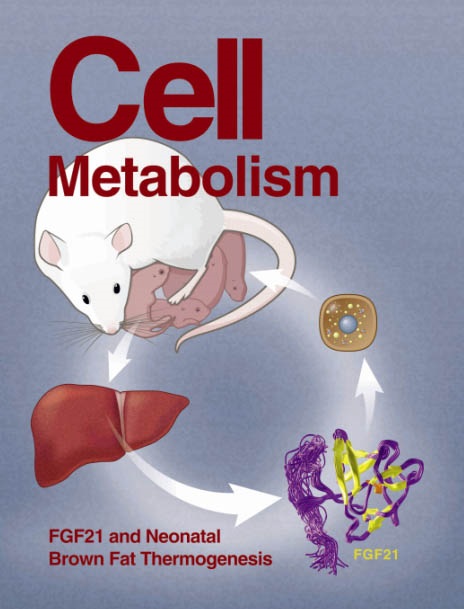丙酮酸代谢酶DLAT通过抑制亮氨酸分解代谢促进肿瘤发生
IF 30.9
1区 生物学
Q1 CELL BIOLOGY
引用次数: 0
摘要
丙酮酸和支链氨基酸(BCAA)代谢是肿瘤进展的关键途径,但它们之间复杂的相互作用及其对肿瘤进展的影响尚不清楚。我们的研究表明,二氢脂酰胺s -乙酰转移酶(DLAT)是一种丙酮酸代谢酶,在肝细胞癌(HCC)中促进亮氨酸积累并维持雷帕霉素(mTOR)复合物激活的哺乳动物靶点。在机制上,DLAT直接乙酰化AU rna结合的甲基谷氨酰基辅酶A (CoA)水合酶(AUH)的K109残基,抑制其活性并导致亮氨酸积累。值得注意的是,DLAT上调与HCC患者预后不良相关。因此,我们开发了一种AUHK109R-mRNA脂质纳米颗粒(LNPs)治疗策略,该策略通过恢复亮氨酸分解代谢和抑制mTOR激活在体内有效抑制肿瘤生长。总之,我们的研究结果揭示了DLAT作为AUH乙酰转移酶的意想不到的作用,抑制亮氨酸分解代谢。利用AUHK109R-mRNA LNP恢复亮氨酸分解代谢可有效抑制HCC的发展,为癌症研究指明了新的方向。本文章由计算机程序翻译,如有差异,请以英文原文为准。

Pyruvate metabolism enzyme DLAT promotes tumorigenesis by suppressing leucine catabolism
Pyruvate and branched-chain amino acid (BCAA) metabolism are pivotal pathways in tumor progression, yet the intricate interplay between them and its implications for tumor progression remain elusive. Our research reveals that dihydrolipoamide S-acetyltransferase (DLAT), a pyruvate metabolism enzyme, promotes leucine accumulation and sustains mammalian target of rapamycin (mTOR) complex activation in hepatocellular carcinoma (HCC). Mechanistically, DLAT directly acetylates the K109 residue of AU RNA-binding methylglutaconyl-coenzyme A (CoA) hydratase (AUH), a critical enzyme in leucine catabolism, inhibiting its activity and leading to leucine accumulation. Notably, DLAT upregulation correlates with poor prognosis in patients with HCC. Therefore, we developed an AUHK109R-mRNA lipid nanoparticles (LNPs) therapeutic strategy, which effectively inhibits tumor growth by restoring leucine catabolism and inhibiting mTOR activation in vivo. In summary, our findings uncover DLAT’s unexpected role as an acetyltransferase for AUH, suppressing leucine catabolism. Restoring leucine catabolism with AUHK109R-mRNA LNP effectively inhibits HCC development, highlighting a novel direction for cancer research.
求助全文
通过发布文献求助,成功后即可免费获取论文全文。
去求助
来源期刊

Cell metabolism
生物-内分泌学与代谢
CiteScore
48.60
自引率
1.40%
发文量
173
审稿时长
2.5 months
期刊介绍:
Cell Metabolism is a top research journal established in 2005 that focuses on publishing original and impactful papers in the field of metabolic research.It covers a wide range of topics including diabetes, obesity, cardiovascular biology, aging and stress responses, circadian biology, and many others.
Cell Metabolism aims to contribute to the advancement of metabolic research by providing a platform for the publication and dissemination of high-quality research and thought-provoking articles.
 求助内容:
求助内容: 应助结果提醒方式:
应助结果提醒方式:


